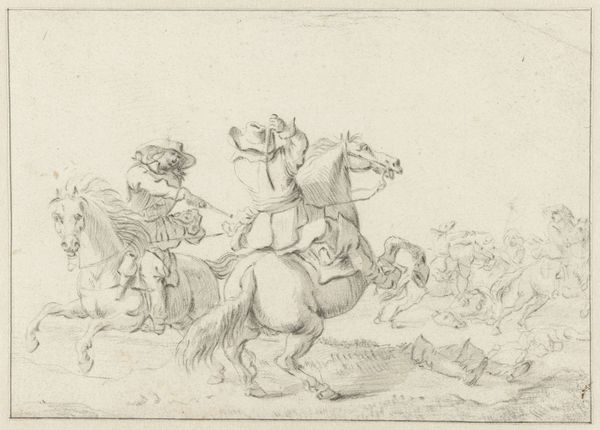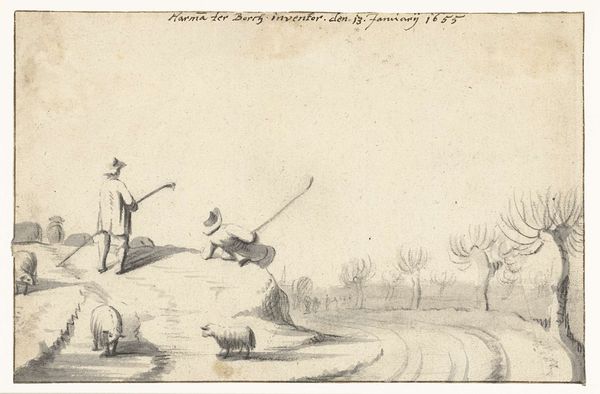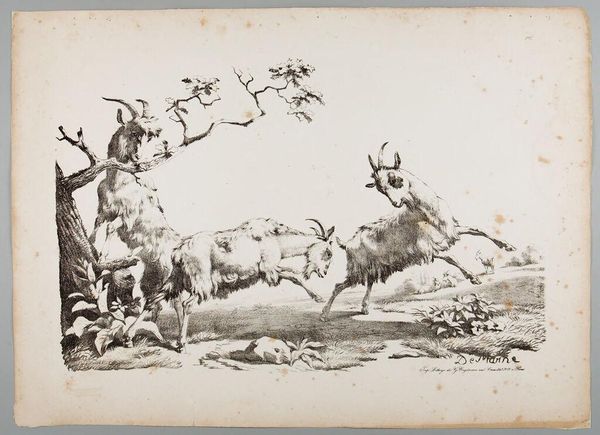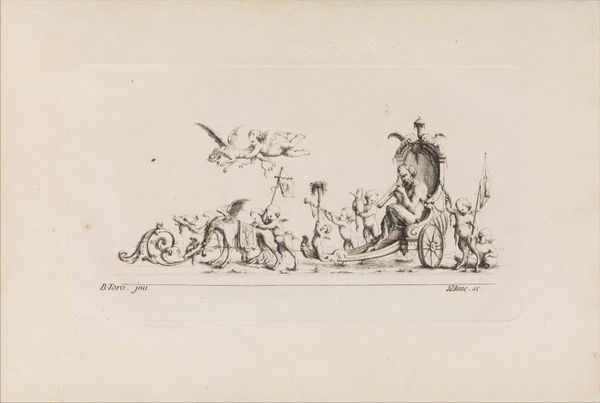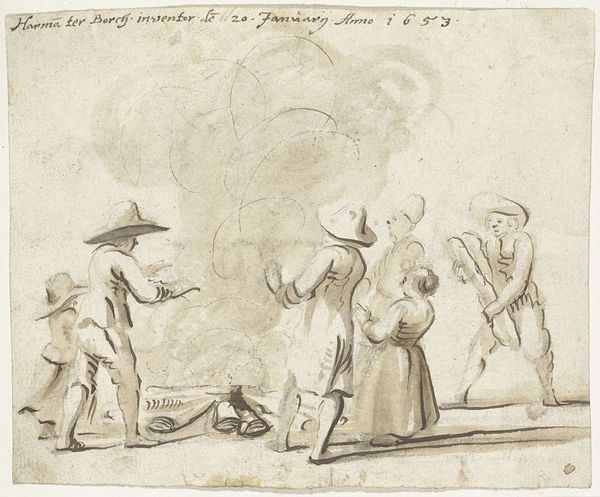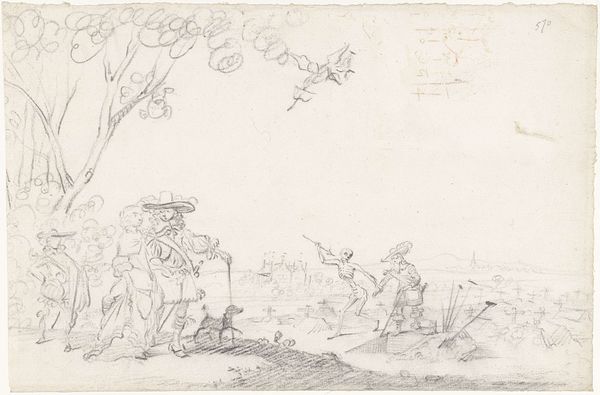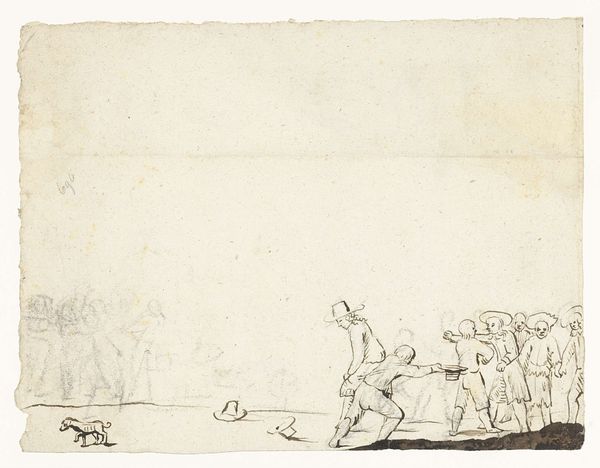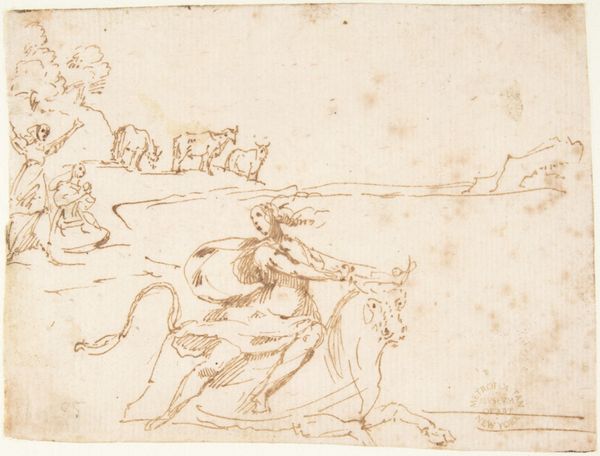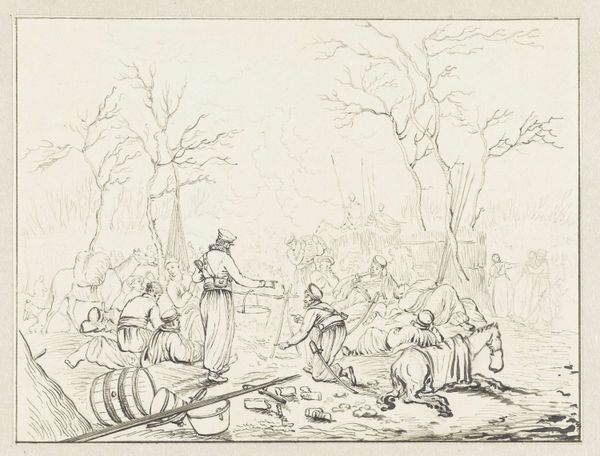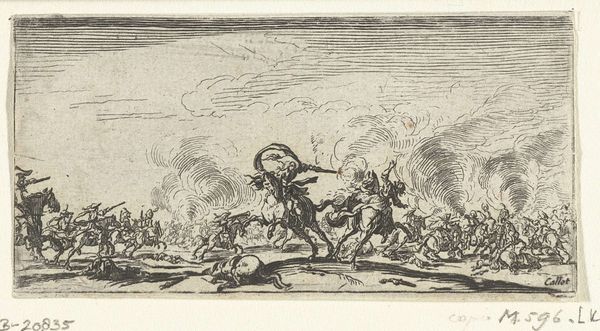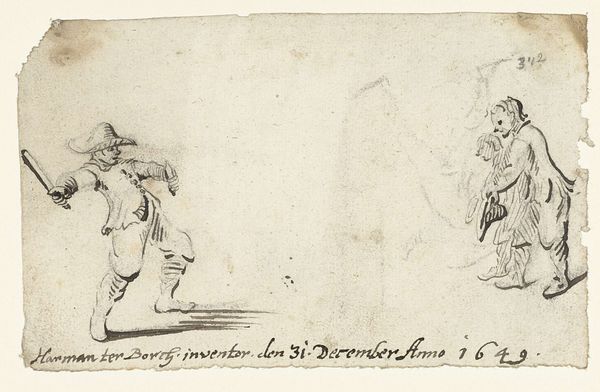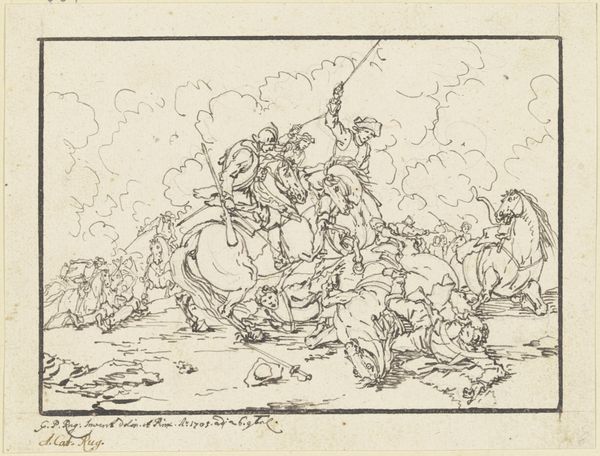
drawing, ink, pen
#
drawing
#
narrative-art
#
baroque
#
dutch-golden-age
#
pen sketch
#
landscape
#
figuration
#
ink
#
pen
Dimensions: height 163 mm, width 211 mm
Copyright: Rijks Museum: Open Domain
Curator: Welcome to the Rijksmuseum. We’re standing before a drawing by Harmen ter Borch, possibly from 1648, titled "Samson zet de velden van de Filistijnen in brand," or "Samson sets fire to the fields of the Philistines." It’s rendered in pen and ink. Editor: My first impression is one of frantic energy! The scratchy lines really convey a sense of movement and chaos. You can almost feel the heat rising from the fields on the left and see it in the Philistine fleeing on the right. Curator: Precisely. Borch masterfully employs line to suggest form and emotion. Notice the relatively simple materials: ink and paper. Borch created this piece in preparation for printing as it seems that it carries notes and markings that a printer would need to successfully transpose the drawing to a woodblock, perhaps for a bible. In its time, paper production depended heavily on linen rags, tying its affordability to the ebb and flow of the textile industry. Editor: I am more interested in the dynamic composition; the diagonal lines pull our eye across the landscape, enhancing the drama of the biblical narrative, really forcing the audience to focus on this scene of destruction as the figures become blurred and indistinct. The fleeing figure is the center that leads the eye. Curator: It speaks to how these printed images circulated within Dutch society. Prints of biblical scenes, circulated widely, contributing to collective identity and moral understanding. The deliberate lines and chaotic field fires really show what materials were available to everyday artists, or perhaps this shows what a printer was seeking to replicate in printed copies of Borch’s original drawing. Editor: Absolutely. It’s fascinating how ter Borch used a humble medium to depict such a grand, almost theatrical scene, highlighting the core aspects of form and movement and downplaying symbolic content of fire itself. It’s the pure action that grabs your attention. Curator: And the labor of making images accessible—consider the skill of the artisans involved. Their work underscores the intertwined economies of art and broader society. The very support this narrative finds itself on carries economic significance of textile supply. Editor: A compelling reminder that even seemingly simple sketches can offer a deep insight on how narratives are visually consumed in any medium. Curator: Indeed. This work provides rich ground for understanding 17th-century print culture.
Comments
No comments
Be the first to comment and join the conversation on the ultimate creative platform.
